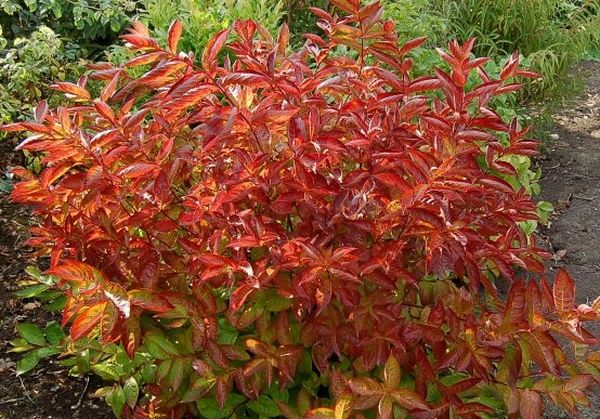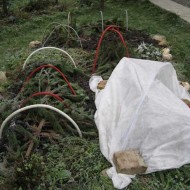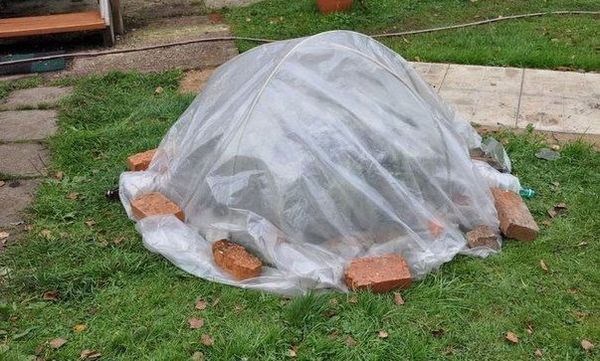How to prepare weigela for winter without special tools
Content
Preparatory work
Caring for a weigela in the fall includes a number of procedures that must be performed before the onset of cold weather. The strength of the plant's immunity and the level of its frost resistance will depend on this. The list of necessary procedures includes pruning, feeding, pest control, watering and mulching. Now we will tell you in detail about each procedure.
Video "How to care for a weigela"
In this video, you will learn how to properly care for a weigela in the garden.
Pruning in the fall
In the fall, rejuvenating pruning is carried out, aimed at stimulating the growth of shoots with the arrival of spring. Keep in mind that pruning is done after flowering, not right in front of the hiding place. In the second case, you will harm the plant. The procedure itself follows the following scheme:
- All diseased and shriveled branches are cut off. The incision is made half a centimeter above the second living kidney.
- Shoots that are poorly developed or grow inside the bush are also removed.
- A third of the shoots are pruned so that the plant focuses on the formation of new branches with the arrival of spring.
- So that the plant does not lose its attractiveness, those shoots that spread along the ground are subject to removal.
- The procedure is carried out with a sharply sharpened secateurs. In no case should you break the shoots with your hands.
- Be sure to disinfect the cut points - cover with garden varnish.
Fertilization
One of the stages of caring for a weigela in the autumn is top dressing. It is carried out after the shrub has been pruned. In the autumn period, potassium-phosphorus fertilizers are applied under the bush, which help the plant to accumulate a sufficient amount of energy. This contributes to the fact that with the arrival of spring, weigela shoots grow more intensively, and it blooms more magnificently.
Mullein is a great fertilizer. A solution is prepared from it, in which water and mullein are diluted in a ratio of 1:10. You can also fertilize the plant using wood ash at the rate of 200 g of powder per 1 sq. m. The rest of the complex fertilizers are prepared based on the instructions provided by the manufacturer.
Pest control
In winter, weigela does not suffer from an invasion of beetles, but rodents will willingly eat this plant. In winter, hares and mice often wander into the site in search of food. They gnaw through branches and bark to get to the very core. After such visits, the chance of plants to survive the winter and bounce back with the arrival of spring is practically zero.
Thus, the preparation of the weigela also implies protection from rodents. For these purposes, special mesh barriers are installed around the bushes. Another option is to wrap the plant in burlap so that the pests cannot reach it.
Some advise using special repellents that treat the bushes. Your specialist store will tell you which repellents work best and how to apply them correctly. For greater efficiency, it is recommended to process the weigela more than once, but to do several sprays during the season.
Organization of watering
Some people think that watering is required only during the growth and flowering periods, but this is not the case. It is equally important to water the plant before wintering so that the roots are saturated with moisture. Although, if there is a lot of rain in your area in the fall, the soil and root zone will receive enough moisture to overwinter. In this case, the procedure is not required. However, in all other cases, watering is required.
In dry weather, the plant requires weekly watering. You can determine the time yourself, based on how quickly the soil dries out under the bush. This watering helps the soil to retain heat, which is a decisive factor in frost conditions.
Mulching
The importance of mulch is greatly underestimated. Meanwhile, a dense layer of mulch will help the soil to keep warm, and the roots will not stop growing even during severe frosts. And if there is a significant drop in temperatures in the region, mulch protects the root system from thawing or freezing. In the absence of a protective layer, the roots can come out of the ground in frost or be mechanically damaged.
As mulch, you can use straw, which is laid in a layer of 10-15 cm. You can also use compost, which is laid out in the root zone. Sprinkle the compost on top with wood chips. Thus, the plant is protected from weeds, and the layer of humus perfectly prevents rotting processes that may occur.
Shelter tips
Now let's move on to the next step in preparing the plant for winter - shelter. Shelter of weigela for the winter is a task of paramount importance, since this plant does not tolerate severe frosts.
Regarding how to cover the weigela, there are several ways you can use.
First way:
- Gently collect the shoots into one "sheaf" and tie them with twine. You need to act carefully so as not to break anything.
- Now the twigs are wrapped in burlap or other similar material (agrotechnical, spandbond).
- With the help of a stapler, its ends are fixed so that it looks like a cover in which the weigela is located.
- Several buckets of soil or compost are poured into the root zone to make a small slide.
Method two (suitable for flexible plants):
- The bush is wrapped with twine not in the middle, but on top.
- A bucket half-filled with sand is tied to one of the shoots at the top so that it pulls the plant down. In this position, it should stay for several hours. During this time, it will sink to the ground.
- Now you need to fix the shoots with bricks or a metal hairpin. Also, the shoots are tied with twine in several more places.
- Shoots caught on the ground are covered with a layer of earth. The height of such an embankment should be at least 30–40 cm.
- The trunk circle is additionally insulated using compost or soil.
Accents on climatic conditions
Weigela can be sheltered in different ways, depending on the region.
In some cases, it will be enough just to sprinkle it with earth or snow, but in others it will be necessary to wrap the plant in burlap. It depends on the air temperature in winter.
In the central regions of our country (for example, in the Moscow region), a frame method is used for shelter. The shoots are bent to the ground, and frame arches are installed above them, which, in turn, are covered with non-woven material that provides reliable protection.
In the regions of the Volga region, branches are bent and covered with soil. This method has been described in detail above.
In the northern regions, only frost-resistant varieties are planted, because only they are able to withstand severe frosts. Insulate them to the maximum. The root zone is mulched, the shoots are tied up, laid on the ground, and wrapped in dense material.
But in the south, you don't need to try too hard with insulation. It will be enough to pour a small hill of earth under the trunk, and thoroughly mulch the root zone.
Common mistakes
Of course, many gardeners make mistakes that can cost a plant its life. Here is a list of what not to do:
- Do not cover the weigela before the onset of cold weather. Temperature drops contribute to the damping out of the bush.
- Do not cover the shoots if they are wet. So the decay process will destroy the shrub during the winter.
- Do not use plastic wrap as a covering material. It does not allow air to pass through, and the plant begins to rot.
- Don't overdo it with watering or fertilizing. In the first case, monitor the condition of the soil, and in the second, strictly follow the manufacturer's instructions.
- Do not damage the roots of the plant if you dig the soil around it in the fall.
List of frost-resistant varieties
There are a number of frost-resistant varieties of this plant that take root in the coldest regions of our country:
- weigela early;
- Weigel Middendorf;
- weigela blooming;
- weigela garden.
We looked at the process of preparing the weigela for winter, as well as various ways to cover the plant. Now you can provide your plant with an excellent wintering experience.






